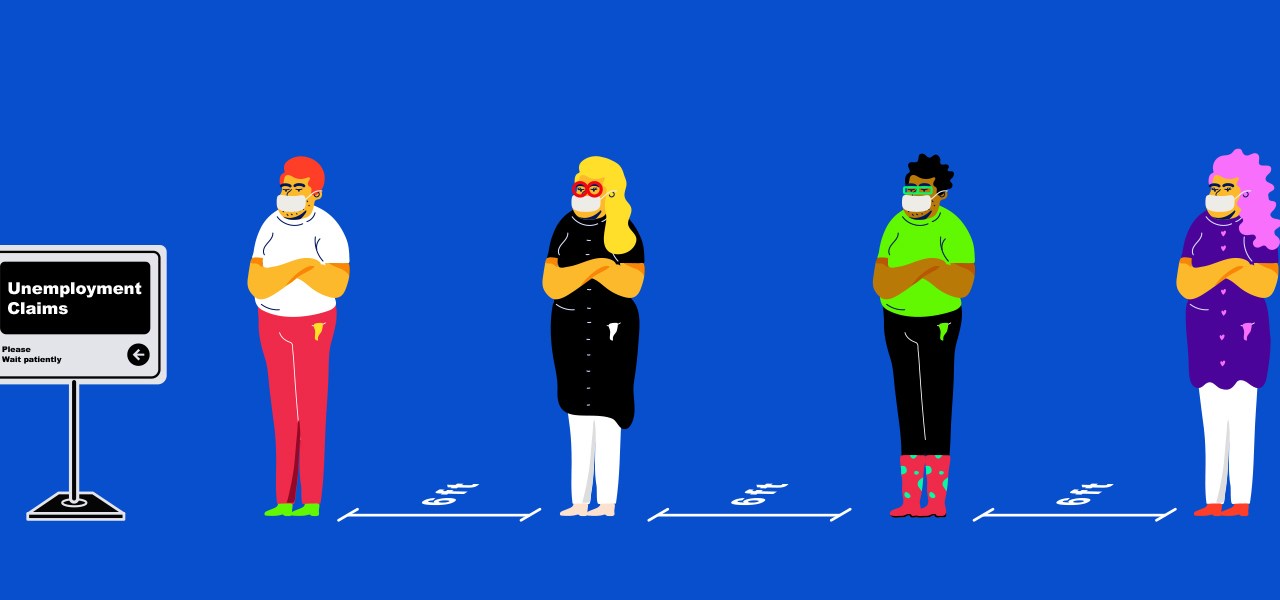Retailers turn to furloughs in an attempt to mitigate costs

As it looks increasingly likely that most non-essential retail stores will be closed for the next several weeks, retailers are being forced to take some more drastic cost-cutting measures in order to survive through the month.
Within the past week, the number of retailers announcing that they are either furloughing or laying off employees have picked up. Macy’s announced Monday that it would be furloughing the majority of its roughly 130,000-strong workforce. The company did not say exactly how many employees would be furloughed, but that there would be “fewer furloughs in our digital business, supporting distribution centers and call centers so we can continue to serve our customers online.” Kohl’s, which had previously said that that it would pay all retail employees through April 1, said on Monday that it would start furloughing retail and distribution center employees, as well as some corporate employees. Meanwhile, b8ta, a retail-as-a-service startup, announced that it had laid off half of its corporate employees last week, while furloughing all of its retail employees.
Practically speaking, there aren’t that many differences between laying employees off versus furloughing them. Both sets of employees are still eligible to apply for unemployment benefits, as neither of them are receiving a paycheck from their respective companies. Employers can still make some benefits like health care coverage available to furloughed employees, though they can also direct them to enroll in Calobra if they choose. Macy’s, B8ta, and Kohl’s have all said that for now, they are still providing health benefits to retail employees.
Because retailers still hope to hire these employees back once they are able to lift the furlough, many of them are trying to maintain as good of a relationship as possible with furloughed employees. Jonathan Bell, a labor and employment attorney and the Founder of Bell Law Group, PLLC said that furloughing employees instead of laying them off can also be especially helpful when a retailer has a group of employees with a special set of skills, and the retailer doesn’t want to have to train a whole new set of employees to do that job once business ramps back up again.
“For [furloughed] employees, technically the employee-employer relationship still exists. It is basically stating that when things ramp up, we’re going to hire you back,” said Bell.
It’s not the only cost-cutting measure retailers are pulling these days — many retailers are also cutting back on their digital advertising budgets, negotiating with landlords on rent, and in the most drastic cases, pledging to not pay rent altogether.
Whether or not a retailer is furloughing or laying off employees can also be an indication of whether or not they think a certain line of business will continue to survive once the number of coronavirus outbreaks slow in the U.S., and states start to let non-essential retail shops open again. For example, Third Love laid off retail employees at its single New York City store last week, as CEO Heidi Zak said, “we are no longer planning to support a retail strategy for the business,” in an email to the company obtained by The Verge.
Ad position: web_incontent_pos1
Vibhu Norby, co-founder and CEO of b8ta, told Modern Retail that the company decided to furlough its retail employees in order to continue paying for their health benefits, as well as to allow employees to continue to vest equity that B8ta has given them. In a note he sent to B8ta’s retail employees, which he posted on Twitter, Norby said that the company “had to take some really difficult steps to give b8ta the possibility to reopen, provide employment to you and others in the future, and ultimately thrive.”
Bell said that furloughed employees also still maintain access to their earned time off, and any other provisions of the employer-employee relationship are still in place. For example, if an employer has a non-compete provision with an employee, that non-compete is still in place during the furlough period, though an employer may choose to lift it in order to let a furloughed employee get some additional work.
Lastly, Bell suggested that companies who furlough employees temporarily cut off access to emails, as employees who do access them could technically claim that they are still working during the period that they were furloughed, which could open the company up to legal trouble.
Many of the companies who announced furloughs have attempted to strike somewhat of an optimistic tone in their announcements, stating that they expect to bring employees back as soon as business picks up again. However, if store closures continue drag on longer than anticipated, some of those furloughs could eventually turn into layoffs.
The Commerce Department said that, in the month of February when the coronavirus outbreak was just starting in the U.S., retail sales dropped 0.5% in the U.S. They’ll likely only decrease at a more drastic rate when March numbers are reported. While Target, which has been classified as an essential retailer, reported that comparable sales grew 20% in March, Macy’s said in its furlough announcement that it has lost the “majority of its sales due to store closures.” A Digiday survey this month found that 40% of retailers and brands expect layoffs this year.
Ad position: web_incontent_pos2
“The largest problem in this entire situation is that there is no timeline that is trustworthy or knowable, that makes it insanely hard to make it a plan beyond a few days or a week,” said Richie Siegel, founder and CEO of retail advisory firm Loose Threads. “A lot of these retailers said we are closing our stores for two weeks, and today that basically expired…I think within the past two weeks, it became very clear that this is a multi-month thing.”

